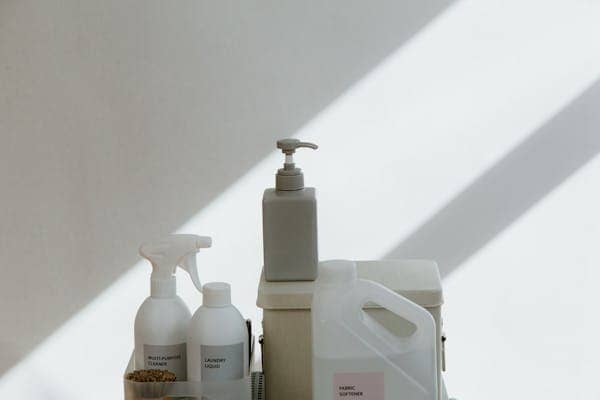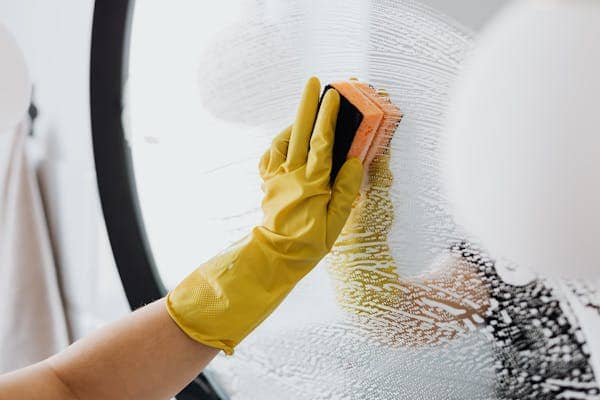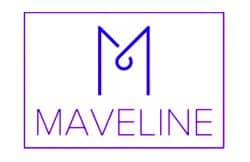Have you ever looked at the label on your cleaning products and felt completely lost? With long, scientific names and vague words like “fragrance,” it can be hard to know what you are really using in your home.
Toxic ingredients in cleaning products that can affect your health and the environment without you even knowing it. Some of these chemicals are irritants, while others have been linked to serious health issues.
The good news is that once you learn what to look out for, you can start to make safer, healthier choices. We will explore seven of the most toxic ingredients often found in household cleaning supplies. You will learn why they are harmful, where they commonly appear, and which natural alternatives you can use instead.
Why You Should Care About Ingredients in Cleaning Products
Cleaning is meant to keep your home safe and healthy. But if the products you are using contain harsh or toxic ingredients, they may be doing more harm than good.
Some chemicals in cleaning products can trigger allergies, asthma, skin irritation, or hormone problems. Others may linger in the air and on surfaces long after you finish cleaning. These effects are even more concerning if you have children, pets, or anyone with sensitivities at home.
That is why reading labels and understanding ingredients is such an important step. You deserve to know what you are bringing into your home.
The 15 Most Toxic Ingredients in Cleaning Products to Watch Out For
Let us look at the ingredients you want to avoid. Below, each one is explained in simple terms so you can spot them easily and know what to use instead.
1. Phthalates
Why it is harmful: Phthalates are linked to hormone disruption and may affect reproductive health.
Where it is found: You often find phthalates in products with fragrance, such as air fresheners, dish soaps, and all-purpose cleaners.
What to use instead: Choose fragrance-free products or those scented with pure essential oils. You can also make your own cleaners using vinegar and lemon or lavender essential oil.
2. Ammonia
Why it is harmful: Ammonia is a strong irritant that can affect your eyes, lungs, and skin. Breathing in its fumes may trigger asthma symptoms.
Where can it be found: Look for it in glass cleaners, stainless steel polish, and bathroom products.
What to use instead: Try a mix of vinegar and water to clean glass and mirrors. For polishing, a small amount of olive oil works well on metal surfaces.
3. Chlorine Bleach (Sodium Hypochlorite)
Why it is harmful: Bleach fumes can irritate the lungs and eyes. When mixed with other chemicals, it can even create toxic gases.
Where it is found: Common in toilet bowl cleaners, disinfectants, and whitening laundry products.
What to use instead: Use hydrogen peroxide or baking soda with lemon juice. These are powerful yet gentle cleaning options.
4. Triclosan
Why it is harmful: Triclosan may interfere with hormones and contribute to antibiotic resistance.
Where it is found: Often found in antibacterial cleaners, dish soaps, and hand sanitizers.
What to use instead: Plain soap and water are usually enough. Castile soap or vinegar-based cleaners are great natural alternatives.
5. 2-Butoxyethanol
Why it is harmful: This solvent can cause sore throats and may lead to liver and kidney damage with long-term exposure.
Where can it be found: Look for it in window cleaners, degreasers, and kitchen sprays.
What to use instead: Switch to plant-based multi-purpose cleaners. Or mix your own using white vinegar, water, and a few drops of essential oil.
6. Sodium Lauryl Sulfate (SLS) and Sodium Laureth Sulfate (SLES)
Why it is harmful: These foaming agents can irritate the skin and may be contaminated with harmful byproducts.
Where it is found: Common in dish soaps, floor cleaners, and laundry detergents.
What to use instead: SLS-free products or look for natural cleaning powders. Soap nuts and gentle plant-based brands are a great choice.
7. Quaternary Ammonium Compounds (QUATS)
Why it is harmful: These are strong disinfectants that can trigger asthma and other respiratory problems. They are also linked to superbug growth.
Where it is found: Disinfecting wipes, sprays
What to use instead: Alcohol-based disinfectants or cleaners made with vinegar and tea tree oil can be just as effective for everyday cleaning.

Home cleaning products
8. Sodium Lauryl Sulfate (SLS)
Why it is harmful: Skin irritation
Where it is found: Dish soap, floor cleaners
What to use instead: SLS-free brands or soap nuts
9. Fragrance (undisclosed)
Why it is harmful: Triggers allergies, may hide toxic compounds
Where it is found: Nearly all scented cleaning products
What to use instead: Look for "essential oil only" or unscented
10. Formaldehyde
Why it is harmful: Known carcinogen
Where it is found: Preservatives in some cleaners
What to use instead: Formaldehyde-free, simple-ingredient products
11. 1,4-Dioxane
Why it is harmful: Cancer risk
Where it is found: Hidden in SLES-containing products
What to use instead: Avoid SLES and PEG-type ingredients
12. Nonylphenol Ethoxylates (NPEs)
Why it is harmful: Hormone disruptors, water pollutants
Where it is found: Detergents, degreasers
What to use instead: Choose biodegradable, NPE-free products
13. Optical Brighteners
Why it is harmful: Skin irritants, not biodegradable
Where it is found: Laundry detergents
What to use instead: Unscented, dye-free laundry options
14. Synthetic Dyes
Why it is harmful: Possible allergens or toxic to aquatic life
Where it is found: Colored cleaners, scented sprays
What to use instead: Dye-free, colorless products
15. Dye-free, colorless products
Why it is harmful: Skin irritants, suspected carcinogens
Where it is found: Furniture polish, degreasers
What to use instead: Plant-based polishing oils like olive or lemon oil
How to Read Labels and Avoid Greenwashing
Many products today are labeled as “green,” “eco-friendly,” or “natural,” but these words are not regulated. This is called greenwashing, and it can be very misleading.
To protect yourself, read the ingredient list carefully. Watch out for vague terms like “fragrance,” “surfactant,” or “preservative” without specific details. These may be hiding harmful chemicals.
You can also look for trusted certifications such as ECOCERT, USDA Certified Biobased, or the EWG Verified mark. These can help you find products that meet real safety standards.
And remember, homemade cleaning products using basic ingredients like vinegar, baking soda, lemon, and essential oils can be just as effective, without any mystery chemicals.

Cleaning mirrors with soap and water
What to Use Instead: Natural Alternatives That Really Work
You do not need harsh chemicals to keep your home clean. In fact, many natural alternatives are just as effective without the health risks. Here are some of the best options you can use instead of the toxic ingredients listed above:
1. Vinegar
Vinegar is one of the most versatile natural cleaners. It cuts through grease, removes soap scum, and deodorizes surfaces. Use it as a base for all-purpose sprays, window cleaners, or toilet cleaners. Add essential oils for a more pleasant scent.
Best for: Glass, mirrors, countertops, floors, and bathrooms.
2. Baking Soda
Baking soda is a gentle abrasive that works wonders for scrubbing and deodorizing. It can lift stains, absorb odors, and tackle grime without scratching surfaces.
Best for: Sinks, tubs, tile grout, ovens, and even laundry.
3. Castile Soap
This plant-based soap is made from natural oils such as olive, coconut, or hemp. It is safe, biodegradable, and highly effective. Mix it with water and essential oils for an all-purpose cleaner or dish soap.
Best for: Dishes, surfaces, hand soap, and even mopping.
4. Hydrogen Peroxide
A powerful natural disinfectant, hydrogen peroxide breaks down into water and oxygen, leaving no toxic residue behind. It kills germs and brightens surfaces without harmful fumes.
Best for: Disinfecting countertops, cutting boards, sinks, and bathrooms.
5. Essential Oils
Essential oils such as tea tree, lavender, lemon, and eucalyptus not only add a pleasant scent but also provide natural antibacterial and antifungal benefits.
Best for: Adding to homemade cleaners, freshening air, and sanitizing surfaces.
6. Lemon Juice
Lemon is naturally antibacterial and cuts through grease. It also adds a fresh scent and helps dissolve soap scum and mineral deposits.
Best for: Cutting boards, sinks, glass, and chrome fixtures.
7. Olive Oil or Coconut Oil
These natural oils are excellent for polishing wood and metal. They moisturize surfaces without leaving toxic residues, and with a clean, shiny finish.
Best for: Wood furniture, cutting boards, and stainless steel.
8. Soap Nuts or Soap Berries
These are natural, biodegradable cleaning agents that contain saponins, which work as gentle, non-toxic detergents.
Best for: Laundry and general cleaning with sensitive skin in mind.
9. Natural Cleaning Brands
When DIY is not your thing, there are many safer alternatives. Look for options that are:
- Free from artificial fragrance
- Clearly labeled with ingredients
- Certified by reputable organizations like EWG, ECOCERT, or USDA Certified Biobased
Safer Cleaning Can Start Today
Switching to safer cleaning products does not have to be difficult or expensive. Start by replacing one or two products with better alternatives.
You can also try simple DIY recipes using ingredients you already have in your kitchen. Over time, these small changes can add up to a big difference for your home and your health.
Final Thoughts: A Clean Home Should Not Harm You
Cleaning your home should make it feel fresh, safe, and healthy. Unfortunately, many commercial cleaning products have the opposite.
By learning which ingredients to avoid and choosing safer options, you are taking a powerful step toward a healthier lifestyle. You are protecting your loved ones, reducing your exposure to harmful chemicals, and making your home a truly clean place to live.
Ready to make the switch? Start with one product and take it one step at a time. You’ve got this.
Join the Free 30-Day Natural Ingredient Swap Challenge, it is a beginner's challenge, try it!

 Simple. Natural. Better.
Simple. Natural. Better.